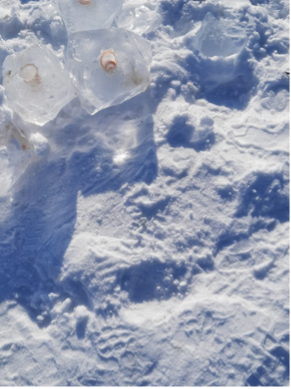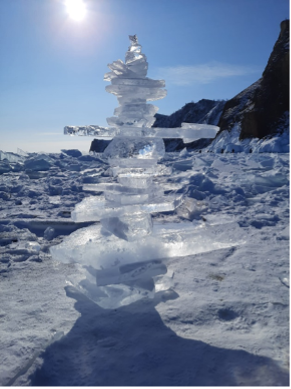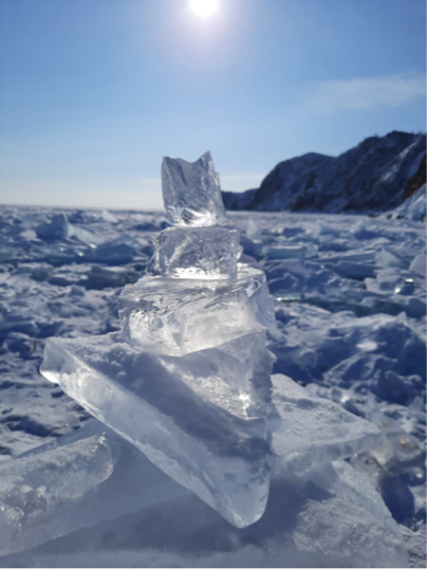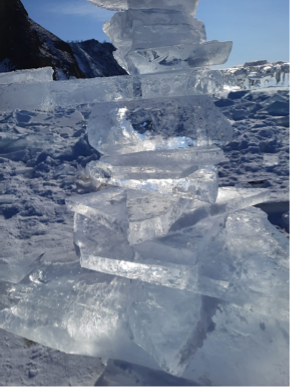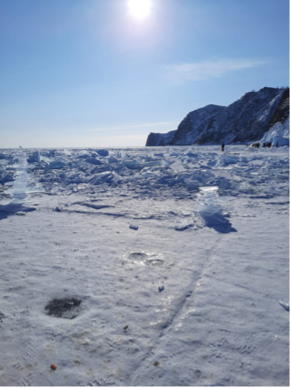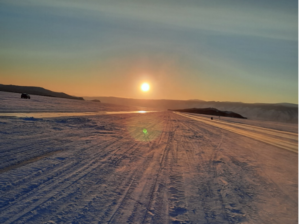17th February 2022
On the 4.5-hour drive in the 4-wheel drive car, I was told about the Shaman traditions and to break the journey up, we took a few side roads to see the small villages and towns along the way and also to experience Shaman traditions. First, we stopped at a “Serge” or “Barisa” – tied round with colourful scarves and ribbons to ask for a safe trip to Baikal and to ask for permission for a safe journey to the Lake itself.
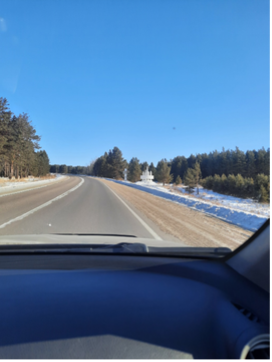
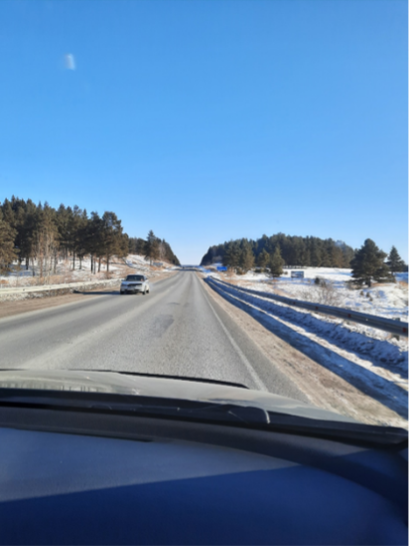
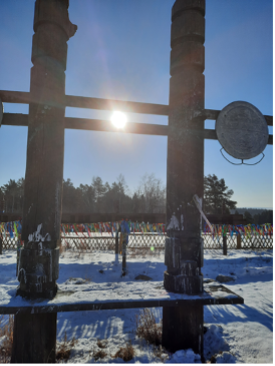
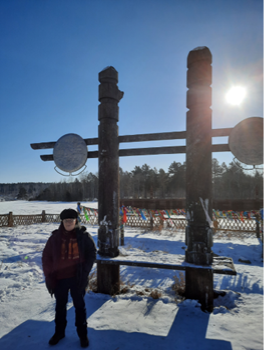
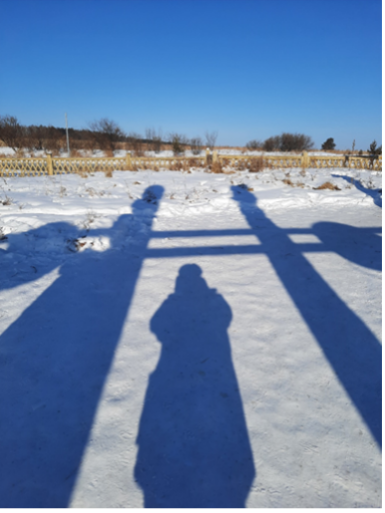
On the way to the Lake, we also passed a number of temples, very simple and plain but they served local communities and farms. It was interesting to see writing that is typically Tibetan or Mongolian and also how plain the temples are in comparison with Buddhist temples that I would visit in Ulan Ude afterwards.
It is interesting to see how superstitious people are in this area.
My driver Andrey went to fill his car up with petrol half way to the Lake and noticed that he had lost his wallet and driving licence (which is vital in this region of Russia). We backtracked to the point that we passed the original Serge and then retraced our visits. he was becoming my and more despondent and depressed until we arrived at the temple photo’d below. He went to the office there and they had found his wallet and greeted him by saying that they knew he would be back and that he should have trusted the spirits.
Anyway, this retracking put us behind schedule for the day, but that is life
The photos below show a local Shaman temple in its simplicity, where the wallet was found.
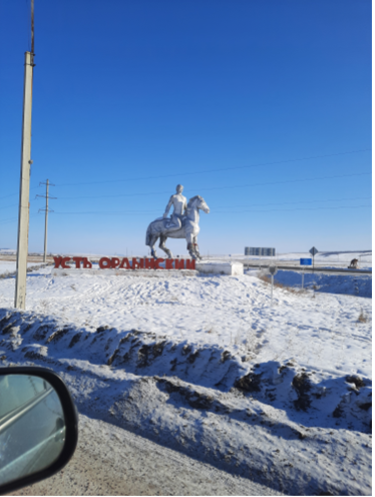
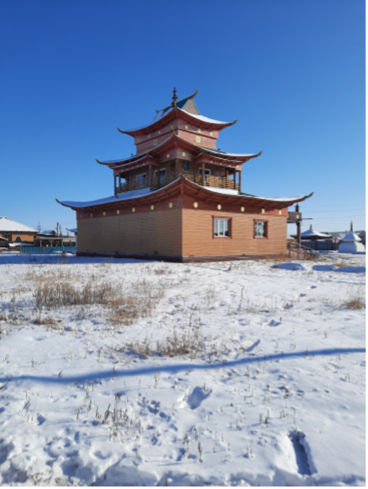
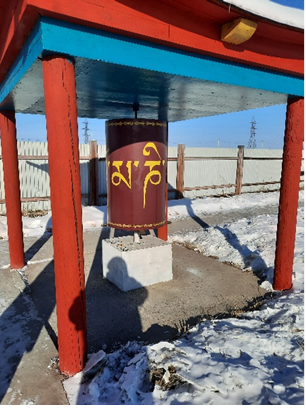
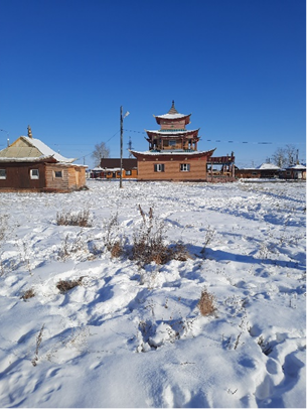
Rather later than planned, we stopped for a late Buryat lunch, which could be described as meat dumplings, salads and blinchiki (blini or pancakes) with regional jam and what was interesting was that the dumplings had to be eaten is a specific way by hand, biting a small hole in the bottom of the dumpling and drinking the meat juice first and then eating the rest of the dumpling. The seasoning was just perfect, very mild but distinctive. It was really tasty and not as greasy as I was imagining.
I was also fascinated in that the settlers in this region were cattle breeders and farmers and they have a breed of cows that are left out all winter and only taken inside when it is exceptionally cold. During our trip it was around minus 35-38°C and the cows were wandering freely in the field and on the roads. They really are a hardy breed. Originally the cows were all Turano-Mongolian (which can resist down to minus 50°C) but these has been a lot of interbreeding with more European breeds in recent years
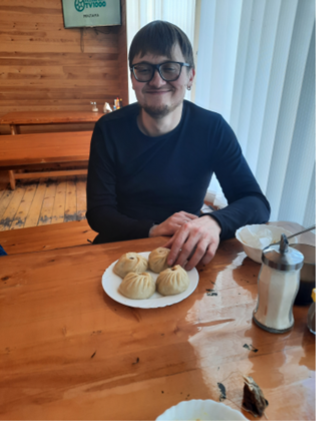
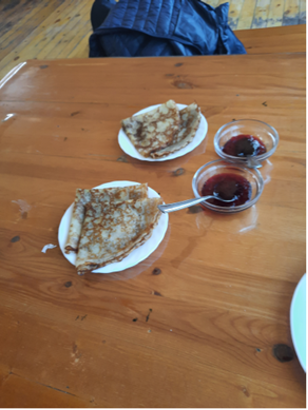
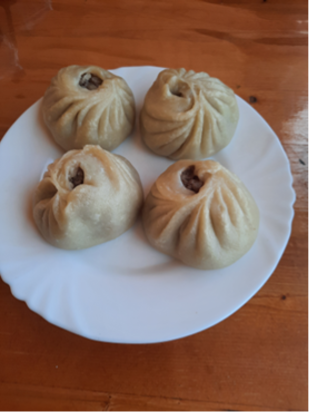
The trip continued to Lake Baikal through differing landscapes. Outside Irkutsk it was afforested with various types of trees and is the backbone of the local oil, gas, non-metallic and mining industries in the region (with a large amount of criminal activity apparently) and then closer to Lake Baikal it was more barren and starker with not much vegetation at all. This was due to the very poor soil and ground in the region after the glaciers retreated. The difference was really stark
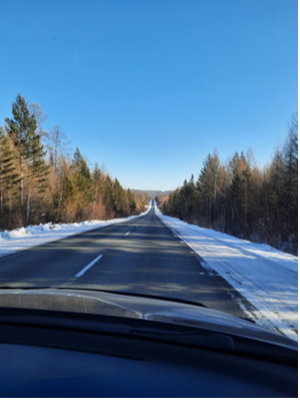
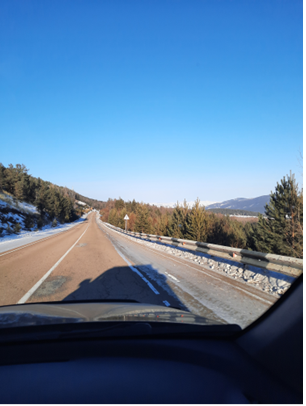
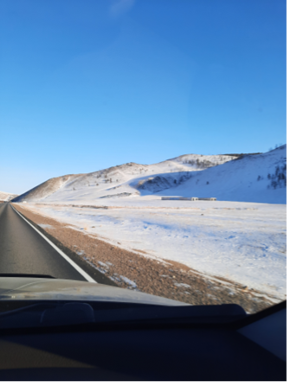
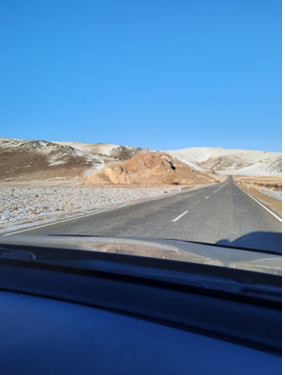
As we went close to the lake the landscape changed again, rose to a peak and then there was a steep drop to the lake itself, appearing to be shimmering in the afternoon light in the distance. I could see the little village close to the frozen Lake.
The drive was down a small side road in the Maloe bay. More, very surprising and somewhat disappointing to the Lake shore and prior to going on the ice road there was a security check, passports and driving licence and confirmation of where we were staying, then over a small sandy embankment and onto the ice road itself.
I was really surprised at how the area around the lake was really uncommercialised, just a few family run coffee shops and “interesting” toilets but apart from a few isolated dwellings and cottages, nothing else. But as I was told this is now classified as a protected area and only comes to life during the summers when it is popular for camping and small boarding houses for people from Irkutsk.
The attraction, quiet nature, peace and calm environment and no pollution. The Lake has no mosquitoes and also summer temperatures are comparatively mild (in the mid 20’s). Winter is for small tourist groups, school trips, ice sports people and the occasional tourists such as me. Whilst I was there the average temperature did not go above minus 32°C and most of the time was around minus 38°C.
The ice road was capable of taking loads of over 10 MT (and the ice can be to a depth of up to 2 meters thick) and the road itself was marked by a company who had the contract for the last 10 years and was brushed clean after snow storms.
However, most people drove where they wanted but tended to stick to the road (very approximately).
Supplied of fresh food, fuel and other necessities were carried daily by small trucks to Olkhon Island which is the third-largest lake island in the world. Its area is 730 km2 (280 sq. mi) and measures 71.5 km (44.4 mi) in length and 20.8 km (12.9 mi) in width. I was staying in the “capital” (or rather main settlement) Khuzhir which had a permanent population of around 1800 people.
Views onto Lake Baikal

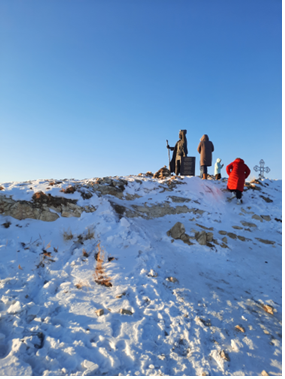
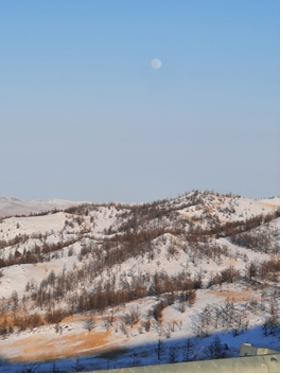
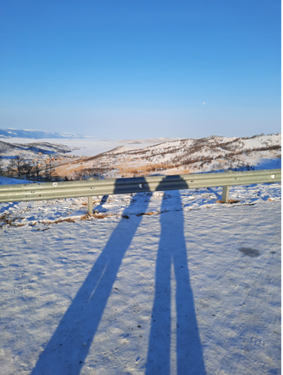
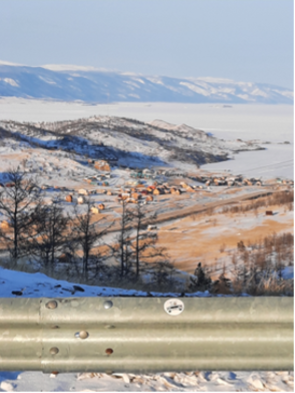
A few key facts about Lake Baikal to give some perspective about what I was going to experience and also where I was in Russia:
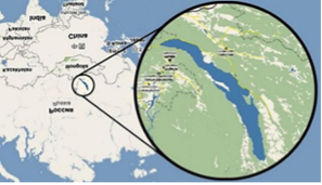
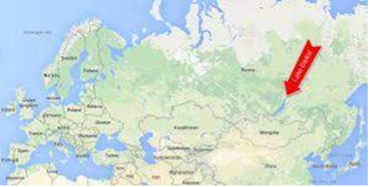
Lake Baikal is 12,248 square miles (31,722 square km). Length: 397 miles (640 km), Maximum width: 49 miles (79.5 km) Average width: 29 miles (47 km) Minimum width: 16 miles (25 km). Coastline area: 1,300 miles (2,100 km).
More than 300 streams and rivers feed into Lake Baikal, but the Angara River is the only outlet. It carries out about 60 cubic km (15.8 trillion gallons) of water per year into the Yenisei River. Eventually the water makes its way to the Arctic Ocean.
The Selenga River is the largest source of water coming into Lake Baikal. Flowing north from Mongolia, it contributes nearly 50 percent of the lake’s water. Like Lake Baikal, the Selenga Delta is internationally recognized for its biodiversity and importance, according to the Ramsar Convention.
Lake Baikal is the only very deep lake to have oxygenated water at its lowest depths, like the ocean and additionally, the earth under Lake Baikal is heated. The cause of the heat is unknown. It is considered one of the clearest lakes in the world, During the summer, when the lake is full of melted ice from the Siberian mountains, it is sometimes possible to see more than 130 feet (39m) down. The stunning clarity is the result of the melted ice’s purity, plankton that eat floating debris and a lack of mineral salts in the lake.
On the ice road for the first time:
There are no enough words to describe the psychological impact that the entry onto the ice road had on me, it was absolutely stunning, one moment we were on a sandy track and bank and the next driving on thick ice in stunning weather,
I had never experienced anything like it and was really awestruck by the beauty of what I was seeing. The views were magnificent and, given the timing of our arrival on the lake, the sunset was spectacular. I took lots of photos and videos of the scenery and sunset, some of the better ones are below.
I am always careful with my anticipation of what I might see or experience but this was something special and unbelievable initially.
We were on the road for over an hour stopping to take in the scenery, looking at the frozen waves and stalagmites on the rocky outcrops and exploring a few caves along the way.
The photos have not been filtered or colours enhanced. Just as I saw the views.
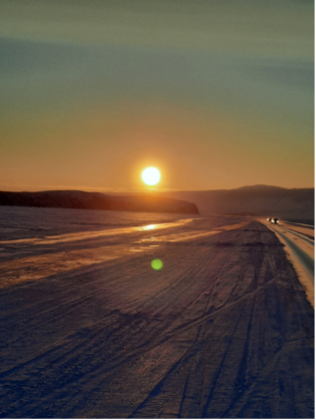
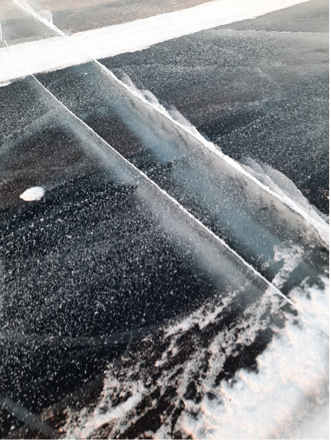
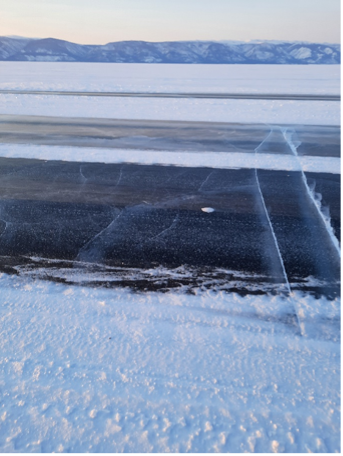
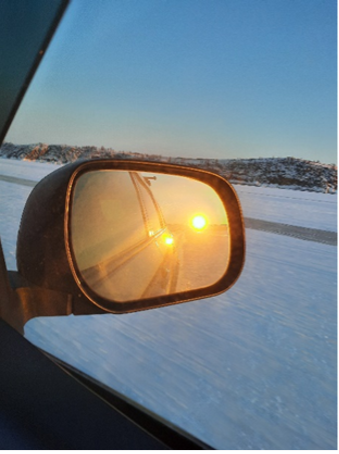
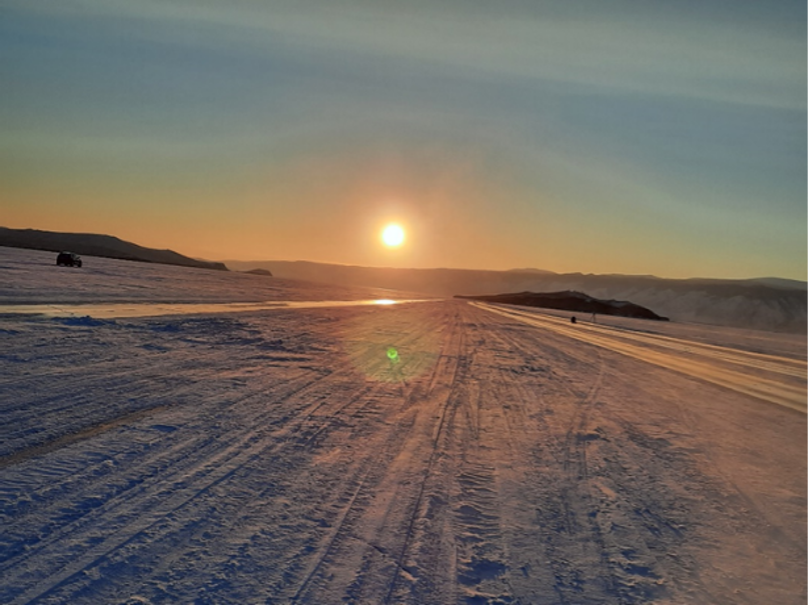
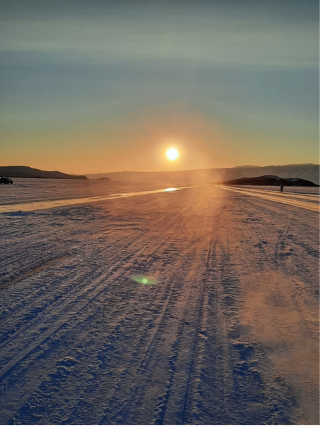
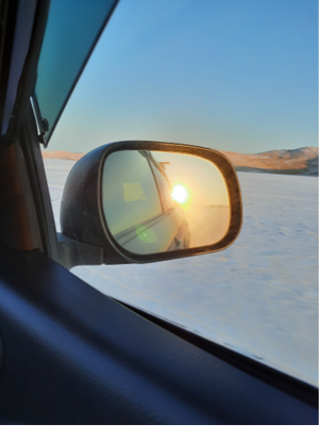
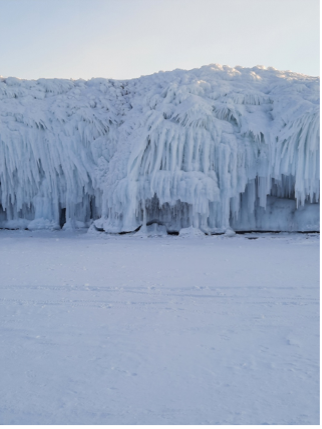
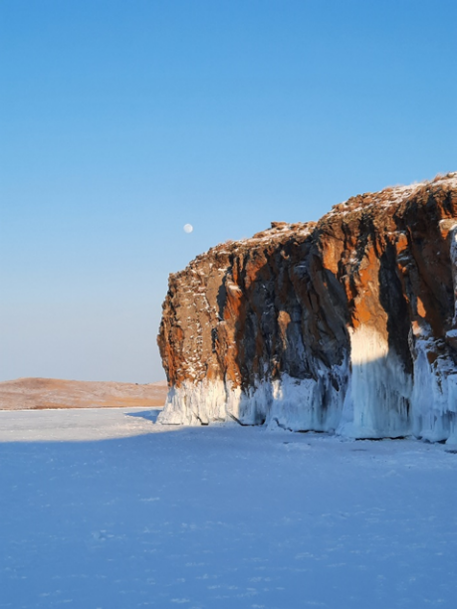
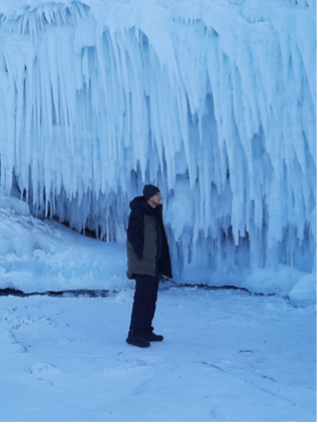
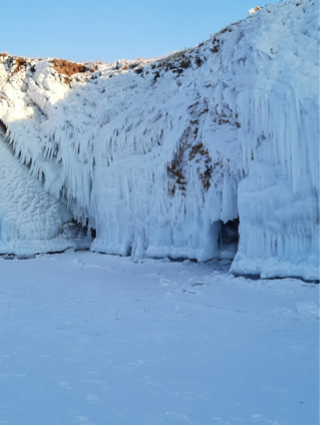
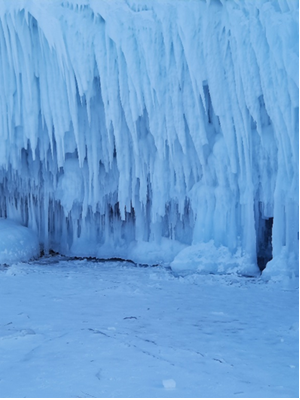
We drove to Okhon Island which was going to be my home for the next few days. This is a very spiritual island and sacred to the Shaman traditions and I was looking forward to learning more about the culture and history of the Buryats from this region as well as visiting the major sites of interest as well. There are a series of Serges at Shamanka on Olkhon Island
The indigenous Buryats, adherents of shamanism, believe the island to be a spiritual place; one of the groups of deities revered in Buryati yellow shamanism is called the oikony noyod, the “thirteen lords of Olkhon”. On the western coast, close to Khuzhir, is Baikal’s most famous landmark, the Shamanka, or Shaman’s Rock that the followers of shamanism believe that Burkhan, a modern religious cult figure of the Altai peoples, lives in the cave in this rock. This would be the highlight of the trip tomorrow.
Once settled in the lodge, I walked around the site and to the entry point to the ice road and was struck by the purity of the air, the most wonderful views from the island and, more importantly the calmness and peace of the whole environment. I was really relaxed and calm and starting to fall under the Baikal spell.
The village of Khuzhir was also the old fishing port for the island which was closed a number of years ago to protect the fish stock and also eliminate the pollution from the old fishing vessels. this adversely affected employment on the island naturally and close to the lodge the remains of the fishing business has been turned into a tourist site. I explored the sites before going to bed as they were close to the lodge.
Just before going back to the lodge for a bit to eat, I saw interested to see a Soviet-era UAZ van driving off the lake and up to the village. I was told these are very popular for driving on the lake by the locals and drivers as they are simple to maintain, have very reliable and sturdy structures and spare parts easy to acquire.
What struck me about this particular van was its number plate with dad’s initials on it (o842EP) and I took this as more than a coincidence and was over whelmed with a felling of his company on this journey, at least in the village and this part of the trip.
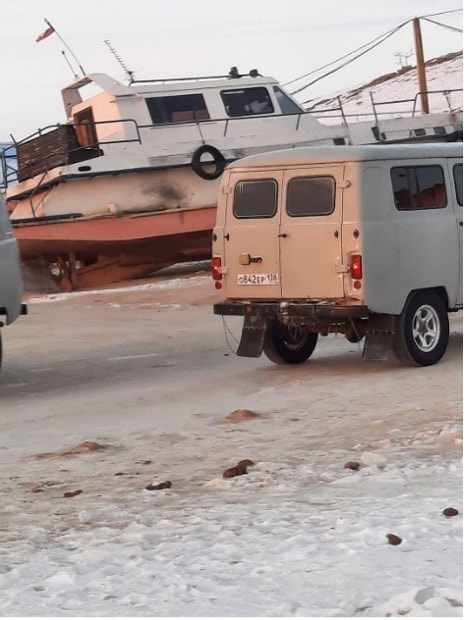
Standing close to the edge of the island and then entry point off the ice road, I saw some magnificent sunsets and sun rises in perfect skies and conditions (albeit below minus 35°C most of the time).
The magnificence of nature was inspiring and left me at a loss of superlative words to describe the impact it had on me. I just kept taking photos and trying to capture the emotions of the moments clearly and precisely.
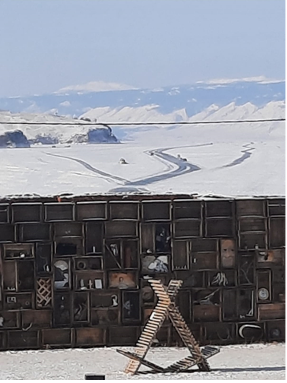
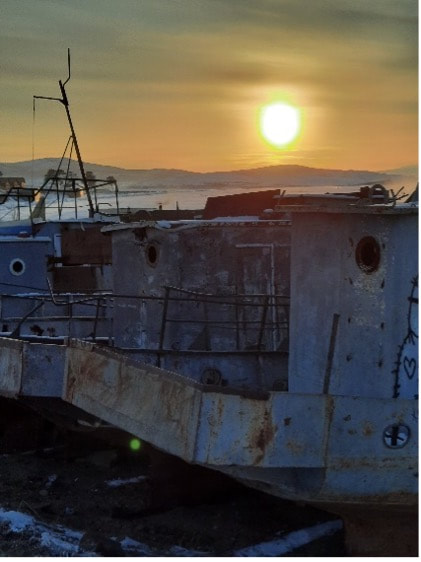
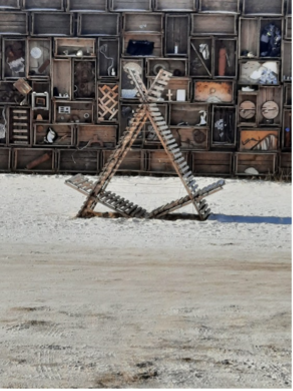
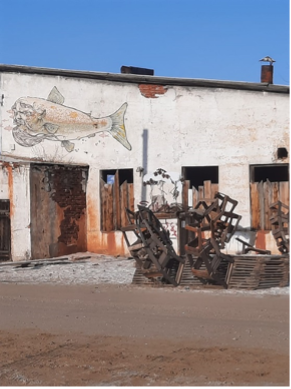
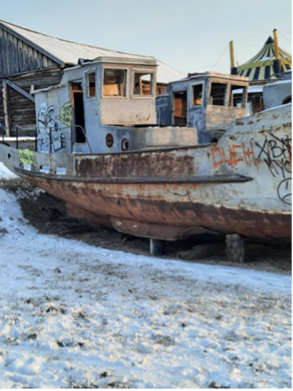
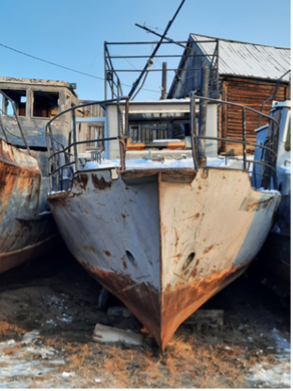
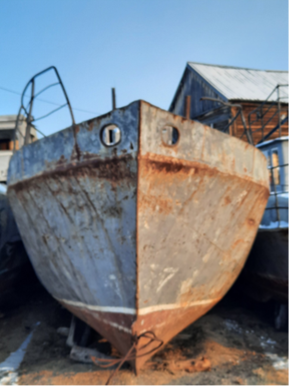
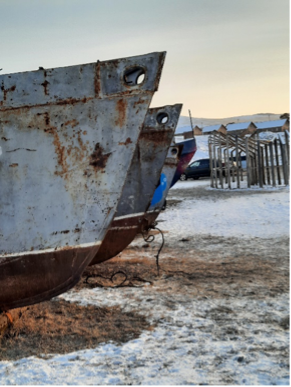
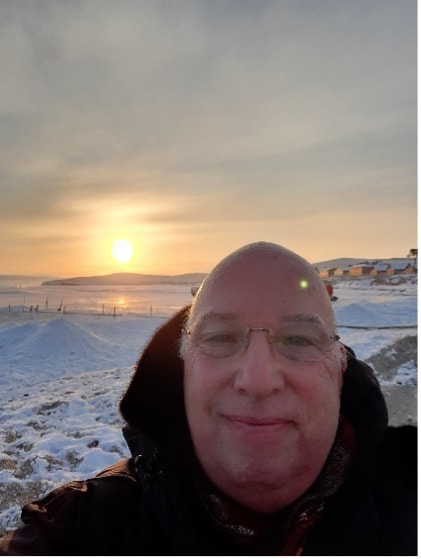
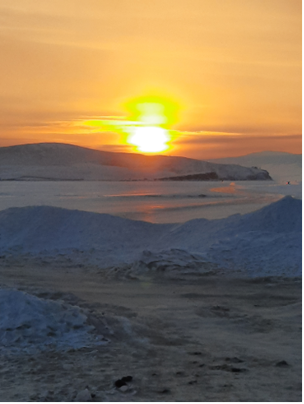
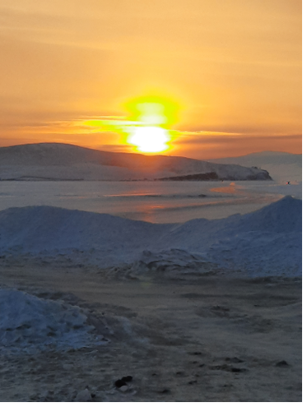
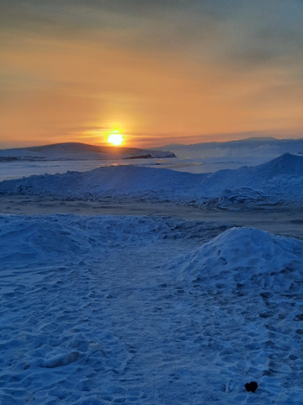
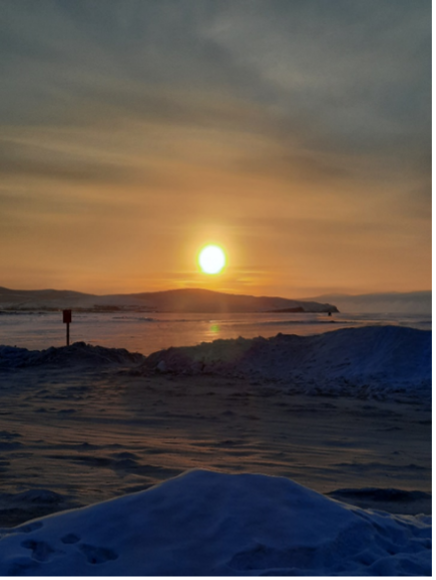
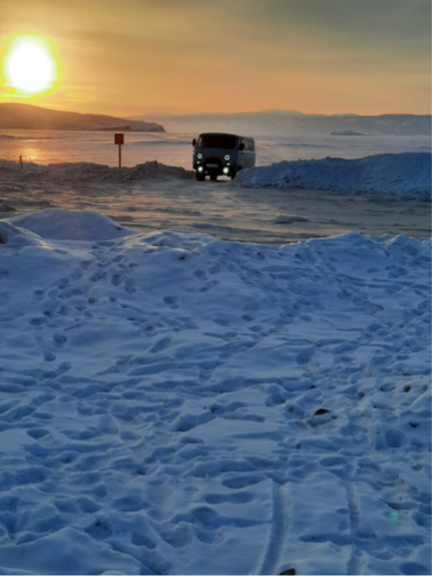
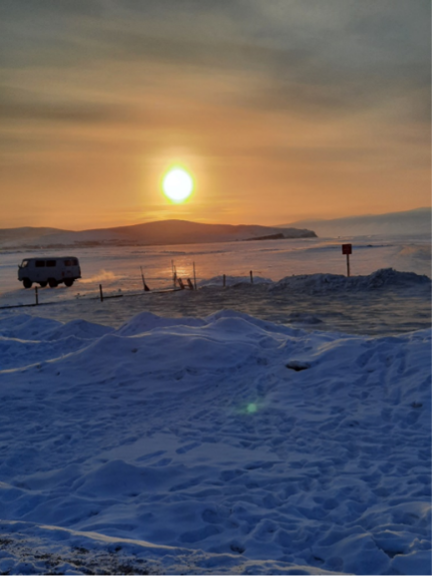
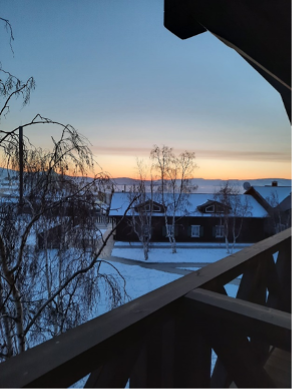
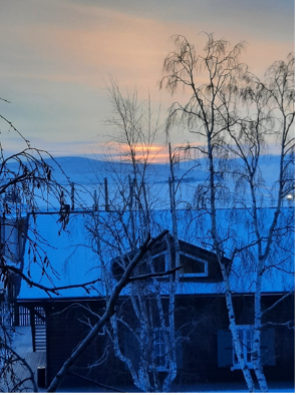
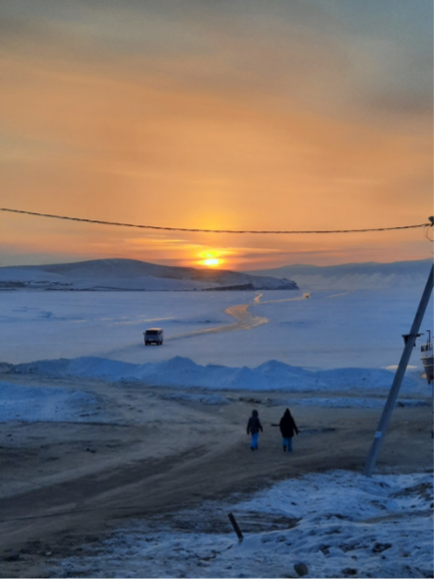
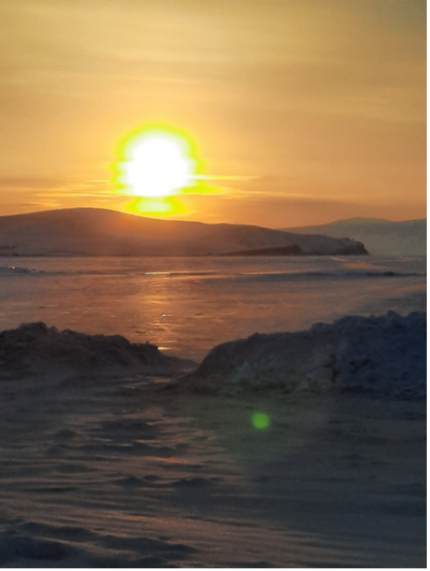
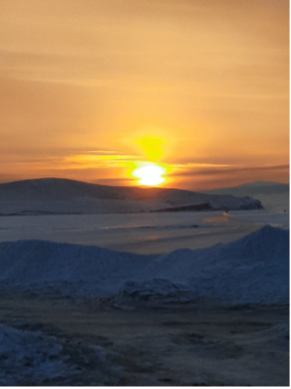
The added effect was related to my not communicating or talking to people most of the time. Apart from talking to the guide (who was staying in a Buryat guest house), I had stopped communicating and this isolation somehow managed to heighten the clarity of my thoughts and reflections and enabled me to process thoughts more clearly.
There was no one to give me their impressions, thus making mine very personal and honest. In truth this was one of the unexpected results of the trip, by not communicating with people once I was out of Moscow, my impressions and emotions were unaffected by outside influences and although I was, in some senses, isolated, I was able to think clearly, process my emotions and appreciate the whole experience on Baikal in a more focussed manner. I became even more happier in my own company than normal. The whole experience was truly a wonderful time with this totally unexpected impact on me (which is still influencing me to some extent).
The evening temperatures fell to below minus 35°C but even at that temperature I felt comfortable walking to the shore and around the area although the first full day on the island, in the same temperature range, I took my gloves off to take a few photos and within a minute or two lost the feeling in the finger tips on one hand which did not recover until a few months later, so no lasting damage was done. I found that the calmness and peace was so relaxing that I had the most wonderful deep sleep and when I awoke (early to see sunrise and then back to bed for a little longer sleep), I was ready for the day ahead.
Next day we drove to one of the highest points of the island to gain perspective and to understand the nature of the island. Driving through forests of twisted and shaped pine and larch trees with wide and stilted root structure (which I was told was due the extreme winds and atmospheric pressure systems as well as poor sandy soil we entered a strange world of baren steppes landscape (although I was told that during the spring and summer, this lower area is covered with rhododendron trees which exist well in the sandy soil).
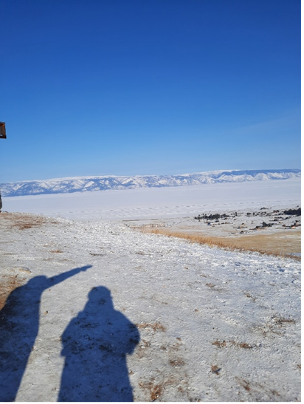
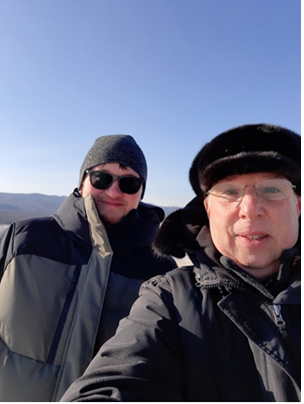
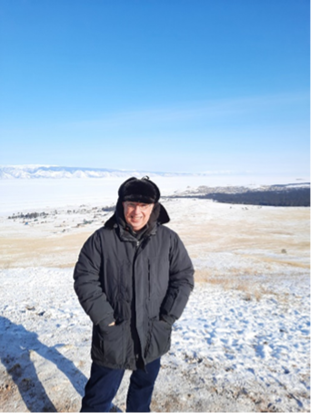
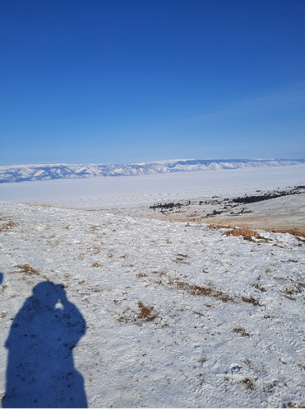
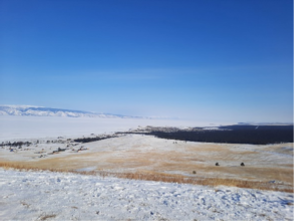
We drove back down to the village and then over to one of the most sacred serges on the island and had the chance to walk down to the outcrop itself. However, at a temperature below minus 40°C with the wind chill and the loss of felling in my fingers, we stayed at the rise of the hill and just looked at the sight as well as discuss the story of the Serge itself. The six pillars of the Serge are the most common photographed pictures of Baikal.
My regret was that I could not hold the phone or camera long enough to focus it but I have resisted the urge to include a commercial photo from the internet.
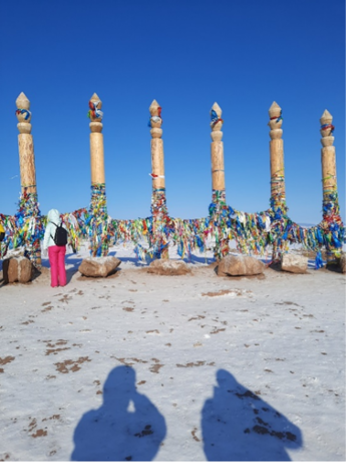
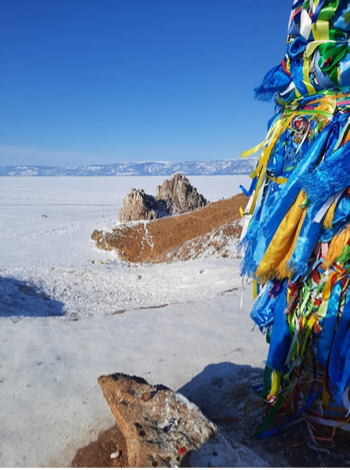
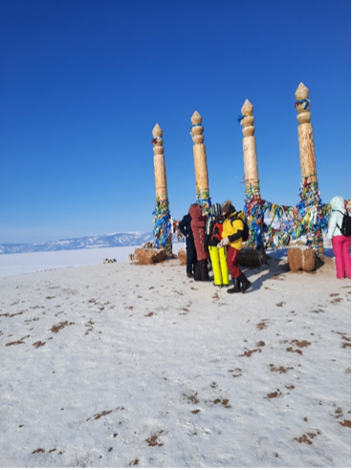
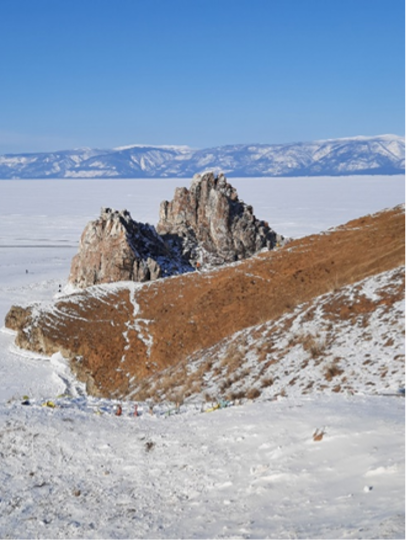
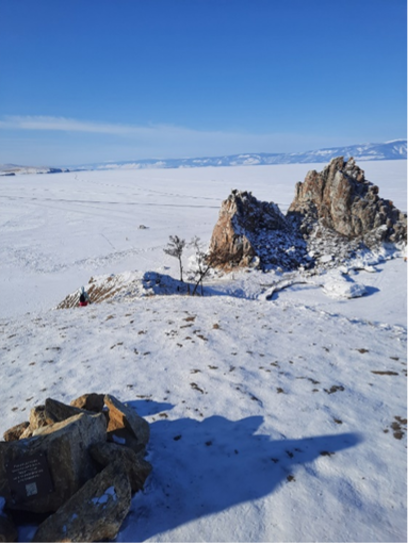
We drove to the northern edge of the island, to see the Sasaan-Khushin Cape, have lunch and look around the area and discuss the legend of the three rocks. It was interesting that there were a few tourist vans and cars but it was relatively quiet, which apparently was not unusual at this time of the year.
The temperature had risen to minus 22°C but the wind had dropped as well, making it more bearable (although the circulation in my fingers was still frozen). The road passed some really interesting ice formations and stalactites. It was just overwhelming and I was captivated by the sights and could not stop taking photos.
There was so much to take in and appreciate. In many respects it was overwhelming.
To show how quiet and isolated we were, here are a few photos of the drive up to the Cape and then the Rock formations themselves and finally the ice formations around the base of the rocks in this area. This was the most northern point of the island and also Lake Baikal’s widest point as well.
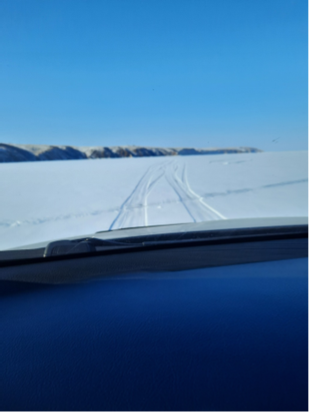
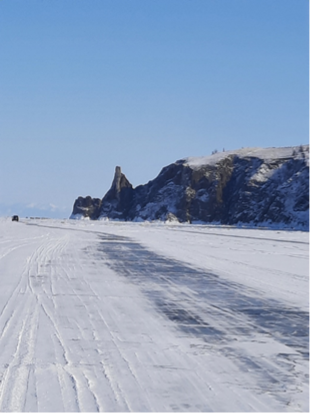
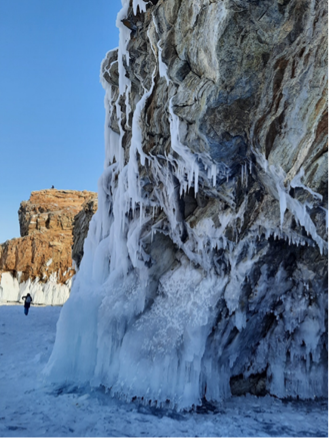
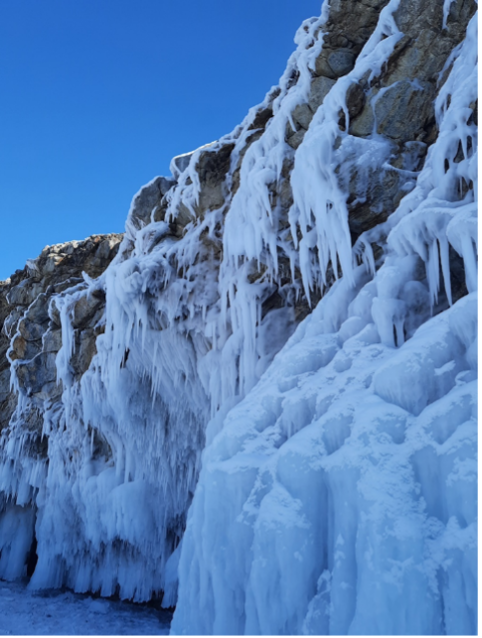
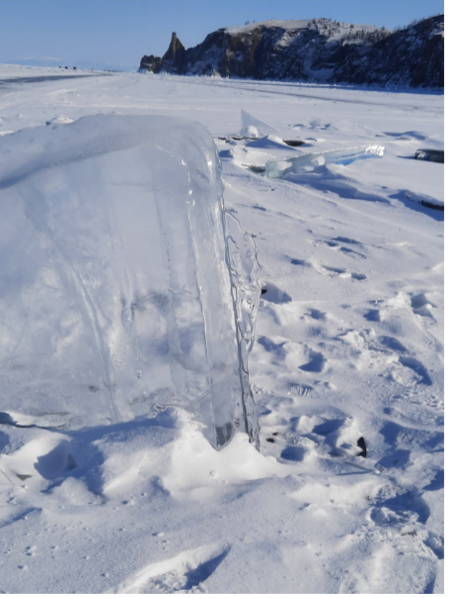
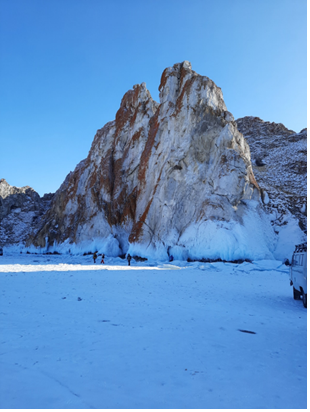
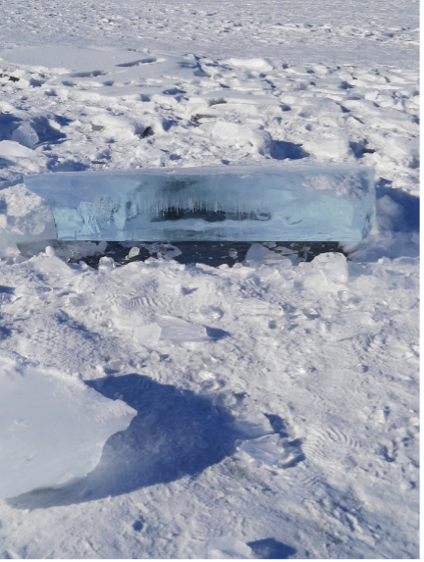
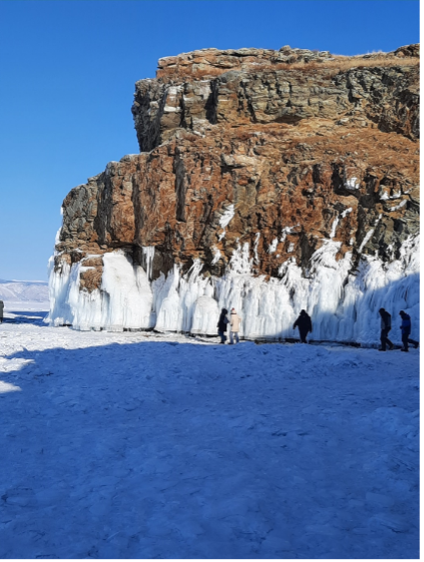
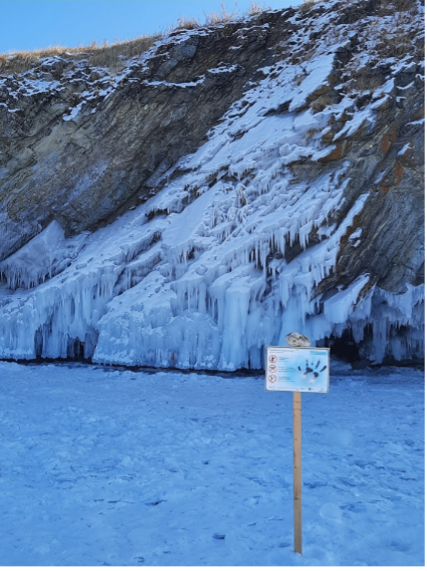
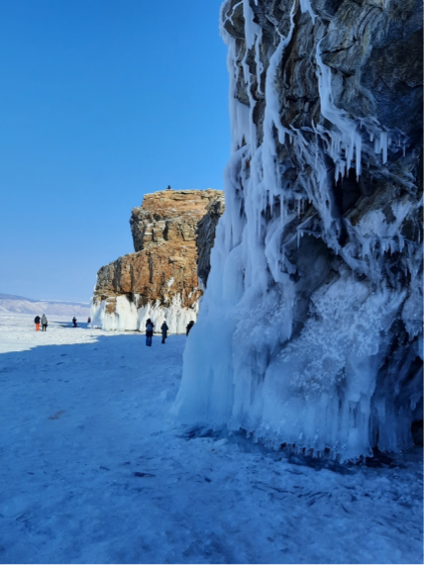
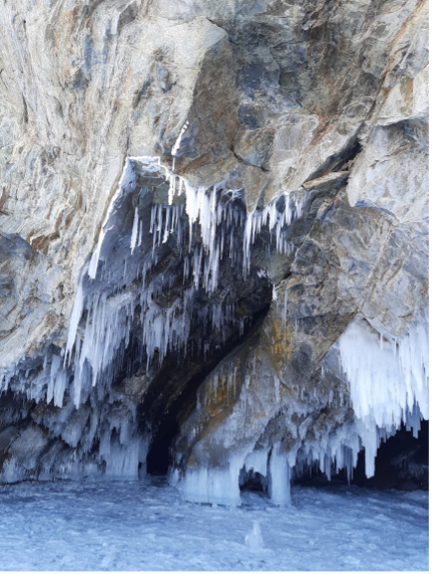
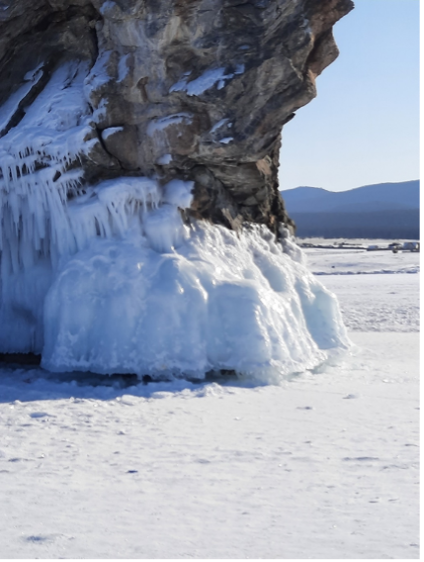
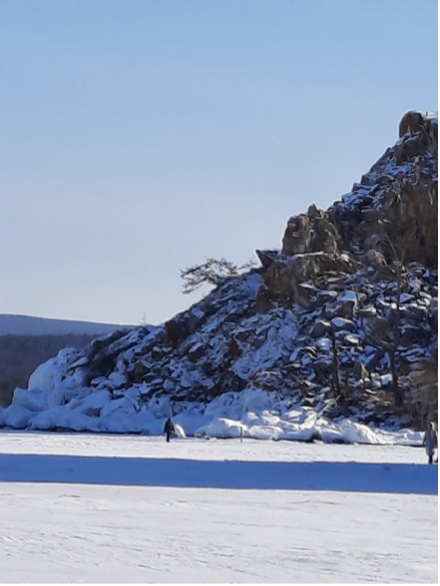
Essentially the legend of “Three Brothers Rock, or Sagaan-Khushun Cape” is very interesting and is one of the main attractions to the island. According to Buryatian legend, there once lived three brothers on Olkhon Island whose father had supernatural powers. Once, their father turned them into eagles but only on the condition that they would not eat dead meat. The brothers were extremely happy with their newly gained freedom as eagles and decided to fly around the island after promising not to eat dead meat.
However, when they were flying around the island, they became hungry and found a dead animal. Despite their promises to their father, they ate this dead animal. When their father learned about it, he was furious and turned them into the three rocks.
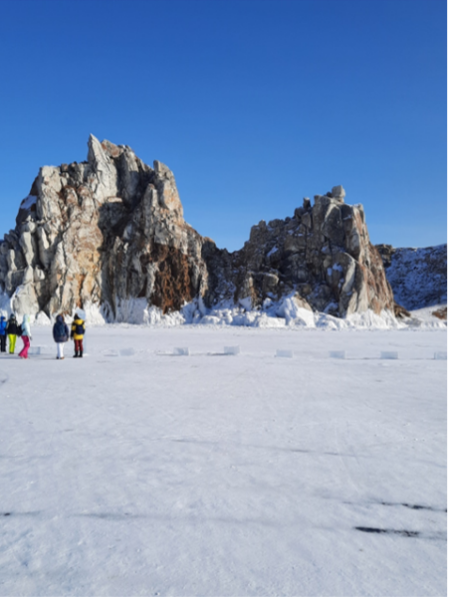
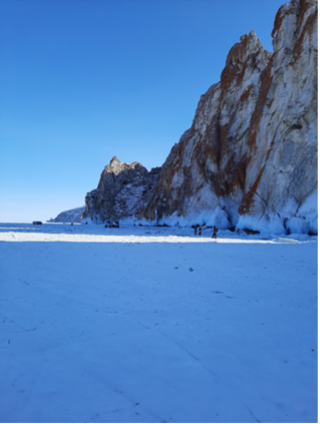
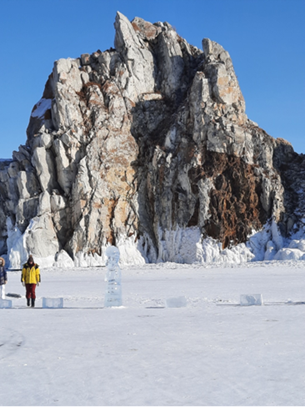
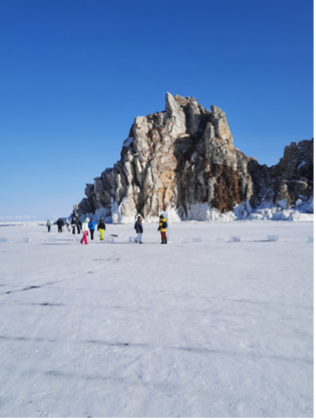
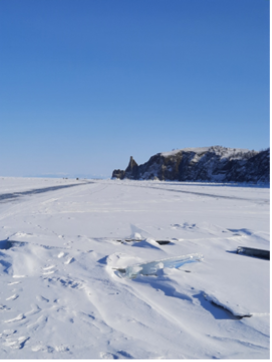
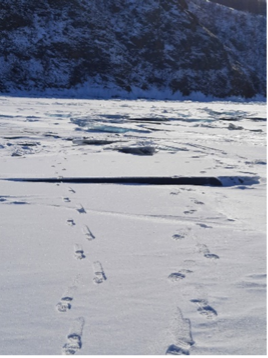
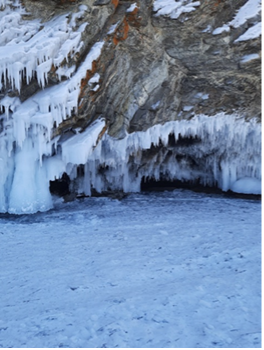
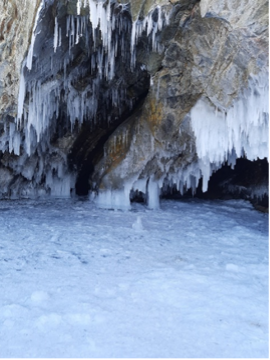
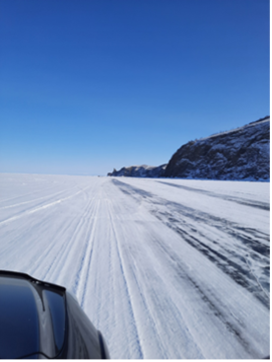
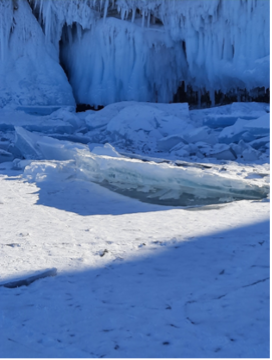
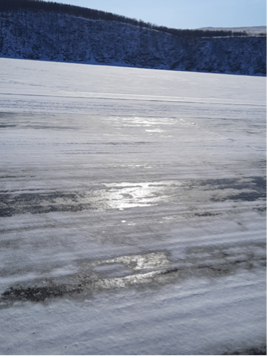
This part of the Island is very popular for tourists to have fish soup or other cooked meals on the ice and also sample the “Baikal kick” drink out of a drilled piece of ice (which made me quite ill as it was a mixture of alcohol and local herbs and berries).
Many tourists carve ice markers and shapes out of the ice as well as below which is really interesting but the few carvings and people on the ice brought home to me the isolation of the lake in the winter. There were a few Russian tourists and a few school trips but no other foreigners as far as I could ascertain. I was really privileged to be there and to have such emotional and thoughtful experience (even if I lost the feeling in my fingers).
